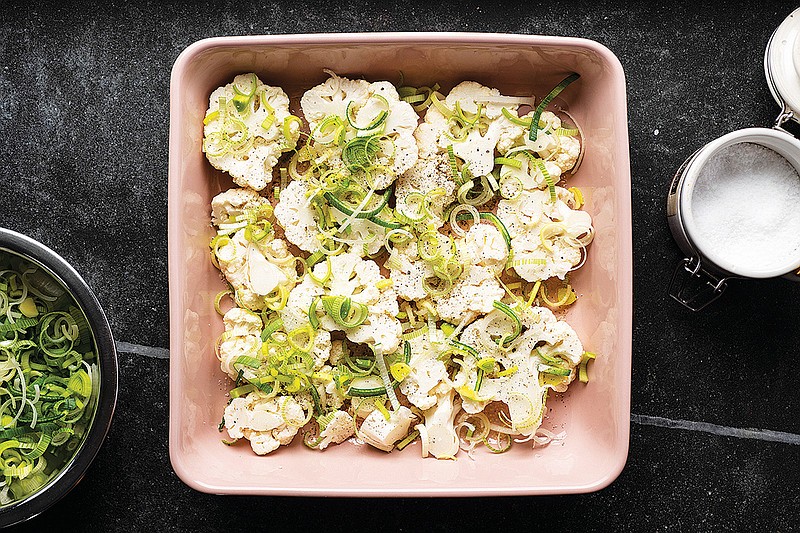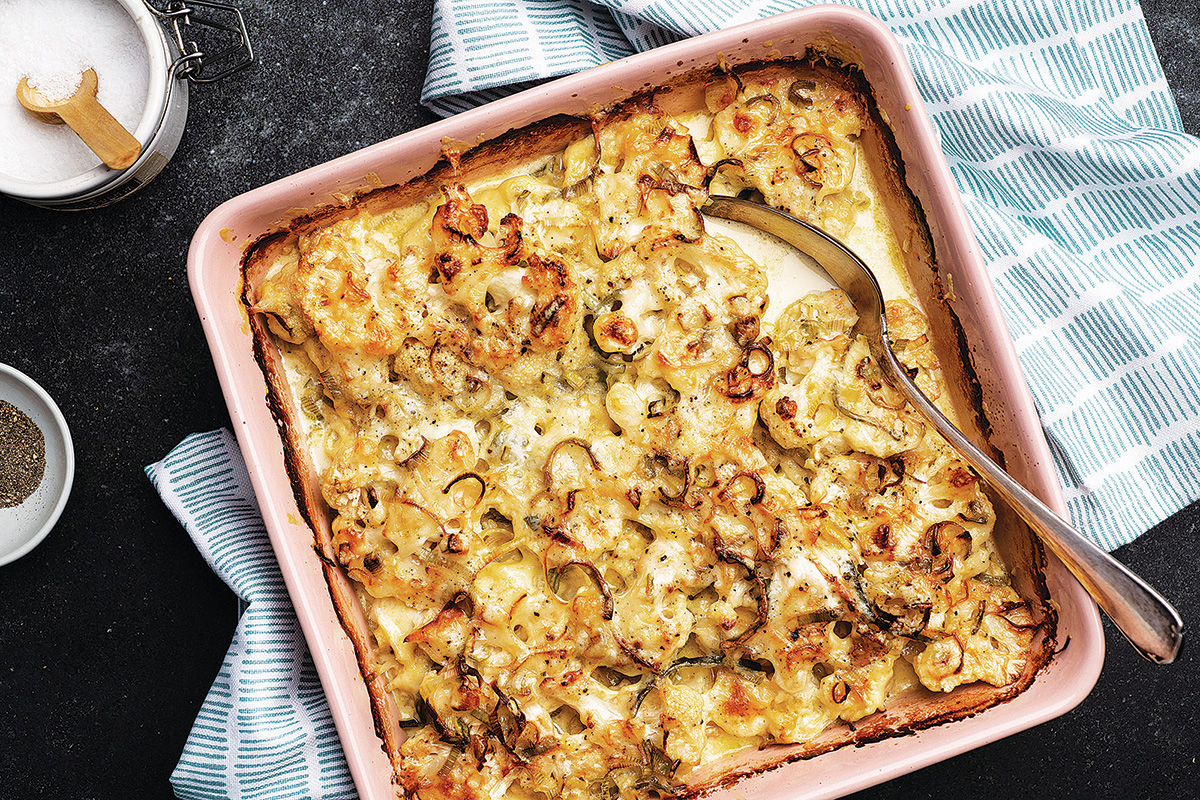Cauliflower seems to be everywhere these days, more than officially qualifying for "it" vegetable status (an outrageous sentence, but here we are).
Prized for its chameleonlike nature, cauliflower is able to become nearly anything. It can be roasted whole and served like a chicken, pressed into a pan for pizza crust, pulverized into rice or puréed to become a soup so velvety you'd swear it was at least half heavy cream.
It's also a kind of poster child for a certain type of vegetarian-paleo-vegan-gluten-free lifestyle. (Vegetarians rejoice: Buffalo cauliflower is very much a thing.) But omnivores tend to overlook it in favor of other brassicas such as broccoli or kale.
No longer! Cauliflower can be just as exciting as anything loaded with chlorophyll.
Steamed, it's a blank canvas, taking kindly to tart lemon juice, loads of olive oil or browned butter, chopped crunchy nuts and a generous grating of hard, salty cheese.
Sautéing it with aromatics is a quick way to lightly caramelize tiny florets, bringing out their cruciferous flavor.
Roasted, cauliflower completely transforms in flavor and texture, from raw to soft and tender, to deeply caramelized, crisp and almost sweet. And in a gratin, simmered in heavy cream until the florets caramelize at the edges, the top bubbles and crisps - well, it's truly spectacular.
Maybe its popularity isn't so outrageous after all.
Spiced Roasted Cauliflower With Feta and Garlic
Yield: 4 servings
Total time: 35 minutes
1 small head cauliflower
6 garlic cloves, smashed
3 tablespoons olive oil, plus more for serving
2 teaspoons fennel or cumin seed
1 teaspoon ground turmeric
Pinch of red-pepper flakes
Kosher salt and ground pepper
1 ounce feta cheese, sliced or crumbled
1/4 cup parsley, tender leaves and stems, coarsely chopped
1/4 cup cilantro, mint or dill, tender leaves and stems, coarsely chopped
Heat oven to 450 degrees. Slice cauliflower lengthwise into 1/2-inch thick slices, including the core and leaves. (Some of the first slices will crumble and fall apart. This is OK, and will be useful when you want those crispier bits.)
Place cauliflower (slices and crumbles) and garlic on a rimmed baking sheet, and drizzle with olive oil. Sprinkle with fennel seed, turmeric and red-pepper flakes, and season with salt and pepper.
Roast, without disturbing, until cauliflower has turned a deep golden brown and crisped up in spots, 25 to 30 minutes. Using a spatula, flip the larger steaks and stir the smaller bits around, and continue to roast until completely and evenly browned, another 8 to 10 minutes.
Remove from heat and transfer to a large serving platter. Top with feta, herbs and a drizzle of olive oil.
Lemony Cauliflower With Hazelnuts and Brown Butter
Yield: 4 servings
Total time: 20 minutes
1 small head cauliflower, broken into larger florets
Kosher salt and black pepper
4 tablespoons unsalted butter
1/4 cup skin-on hazelnuts, chopped
2 tablespoons olive oil
2 tablespoons fresh lemon juice, plus 1 lemon, halved for serving
1/4 cup finely chopped chives
Flaky sea salt
Place cauliflower in a steamer basket set over a large, lidded pot (preferably wider than taller) of boiling water. Season with salt and pepper. Cover the pot, and steam until cauliflower is totally tender, 8 to 10 minutes. (You can check the doneness by piercing it with a paring knife or fork.)
Meanwhile, heat butter and hazelnuts in a small pot over medium heat. Cook, swirling the pot occasionally, until the butter has melted and begins to brown, 4 to 6 minutes. Using a wooden spoon or small whisk, stir the butter, making sure all the milk solids and hazelnuts are browning evenly. Add olive oil, and continue to cook until both the butter and hazelnuts are deeply golden brown, 1 to 2 minutes more.
Once the cauliflower is done, use a potato masher or large fork to gently crush it into bite-size pieces. Transfer cauliflower to a large serving platter or plate, and drizzle with 2 tablespoons lemon juice. Spoon hazelnut mixture over the cauliflower, and top with chives and flaky salt. Serve alongside lemon halves for squeezing.
Cauliflower Gratin With Leeks and White Cheddar
Yield: 4 to 6 servings
Total time: 1 hour
1 small-ish head cauliflower (about 2 pounds), green leaves removed
Olive oil, for drizzling
1 small leek, white and light green part only, very thinly sliced
Kosher salt and black pepper
3/4 cup heavy cream
6 ounces sharp white cheddar, grated (about 1 1/2 cups)
Heat oven to 425 degrees. Slice cauliflower head lengthwise into 1/2-inch thick slices, including the core and leaves. (Some smaller bits will fall away: That's fine. You'll use them as well.)
Drizzle some olive oil onto the bottom of a 2-quart baking dish. (An oval, square or rectangular dish will all work.) Layer about a third of the cauliflower along the bottom and about a third of the leeks. Season with salt and pepper, and repeat until all of the cauliflower and leeks are used. (Don't worry about perfectly layering them.) Season with salt and pepper, and drizzle cream over. Scatter cheese on top, and season again with salt and pepper. Lightly cover with foil, and place in the oven.
Bake until cauliflower is nearly tender, 10 to 15 minutes. Remove foil, and continue to bake until cream has thickened and reduced nearly completely and the top is golden brown and crisp, 35 to 40 minutes. Remove from oven, and let cool slightly before eating.w

